The snake plant is one of the most popular houseplants. Due to the many interesting varieties available with different sizes, leaves and colorations, you will surely find one you enjoy. These plants are extremely easy care. If you want ‘set it and forget it’ house plants, snake plant is an ideal plant for you.
Is the Snake Plant A Good Indoor Plant? Snake plants are a great indoor houseplants. These attractive plants are well known to benefit indoor air quality. They require little care and can be kept in almost any room of your home.
The strong vertical lines of the leaves make these beauties amazing architectural plants. They look great in corners and they have a small footprint. Mother in law’s tongue does well placed in stair landings, small offices, bedrooms, bathrooms and pretty much wherever you want one.
Dracaena trifasciatas are great choices for commercial plantings indoors since they tolerate most light conditions and require little maintenance.
They are a controversial choice for Feng shui plantings due to their aggressive energy. However, that is largely offset by their ability to filter toxins out of the air. Place a Sanseverai in a low traffic area for Feng shui.
Where Did Snake Plants Originate?
Snake plants are native to the dry, humid, tropical regions of Africa, Madagascar, and southern Asia. They are members of the Aspargus family.
Sansevieria trifascia was the original scientific name for snake plants. However, it is recently reclassified as Dracaena trifasciata. The dracaena trifasciata is also commonly known as Mother-In-Law’s tongue, and St George’s Sword.
You may see these plants labeled even now as sansevieria in some plant shops. It’s all the same. Take one home to love.
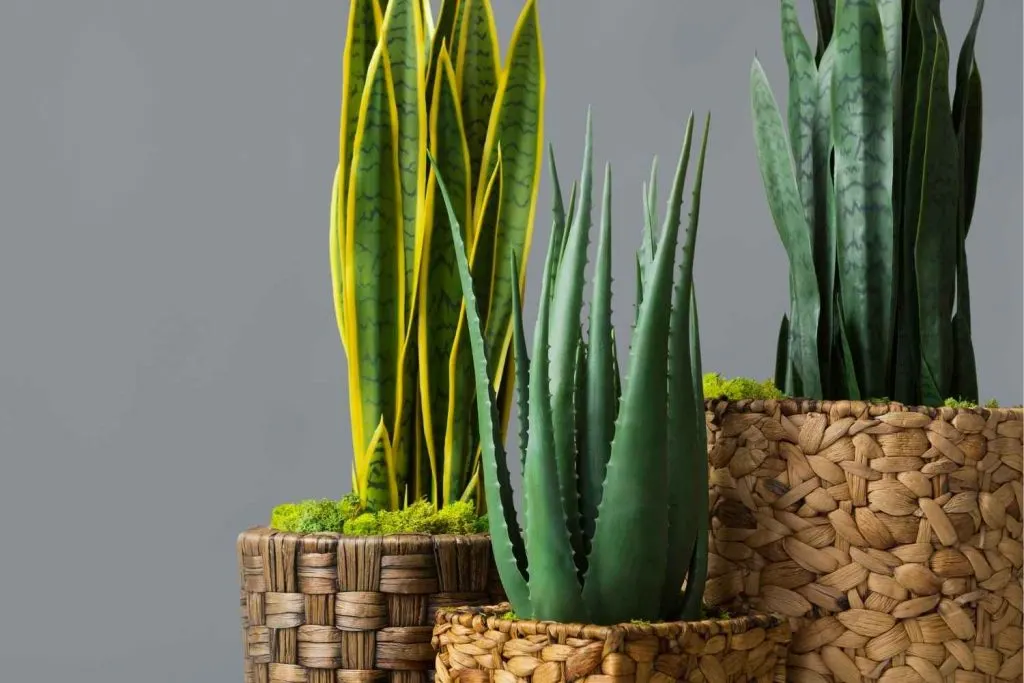
Snake Plant Varieties:
There are around 70 beautiful varieties of snake plants to choose from. You can find Tall (up to three feet) and short dwarf varieties (12 inches high) of trifasciatas. They are available in a large variety of colors, variegations and leaf shape.
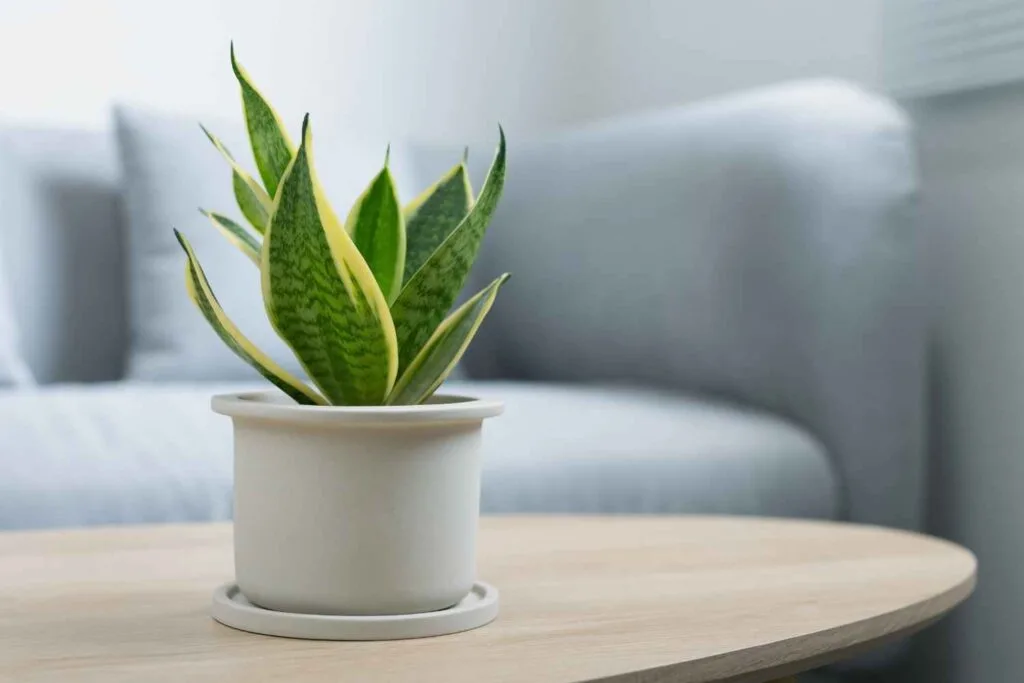
Unvariegated varieties have leaves that range from dark green to silvery grey like the Moonshine snake plant. The Snake plant leaf is thick and rigid in all varieties.
The leaves in most types are upright stiff leaves that erupt from the ground like spears. The color patterns on these swordlike leaves are reminiscent of snake skins with undulating patterns and 3 D depth.
Many varieties have leaves that are flat, sharply pointed and strongly vertical like the ‘Laurentii’ which grows dark green leaves bordered with yellow stripes up to 36 inches tall. Alternately, The Whale fin has very wide leaves that grow shorter.
The Cylindrical Snake plant (commonly known as cylinder snake plants) has tubular leaves. Twisted sister snake plant leaves twist in an interesting pattern.
Favorite Snake Plant Varieties from Etsy:
You will find Draceana trifasciata available in most local plant shops. However, if you are looking for a particular variety and cannot find it locally, Esty is the way to go. Find a reputable small Etsy shop that grows the snake plant you want. The plant quality is usually very good and they know how to ship a plant with little stress.
These are varieties of snake plants from Etsy that caught my eye. All of them offer a plant parent something different. Leaf size, shape, height or style. It’s so much fun to see all the various types.
- Sansevieria Cylindrical
- Birds nest hanii
- Twisted Sister snake plant
- Star Fish Plant
- Moonshine snake plant
- sansevieria Fernwood micado
- Sanseveria laurentaii
- Many more varieties…
Purchase Snake Plants from Etsy
No Matter what your preference in leave size and shape there is a type of snake plant out there for you.
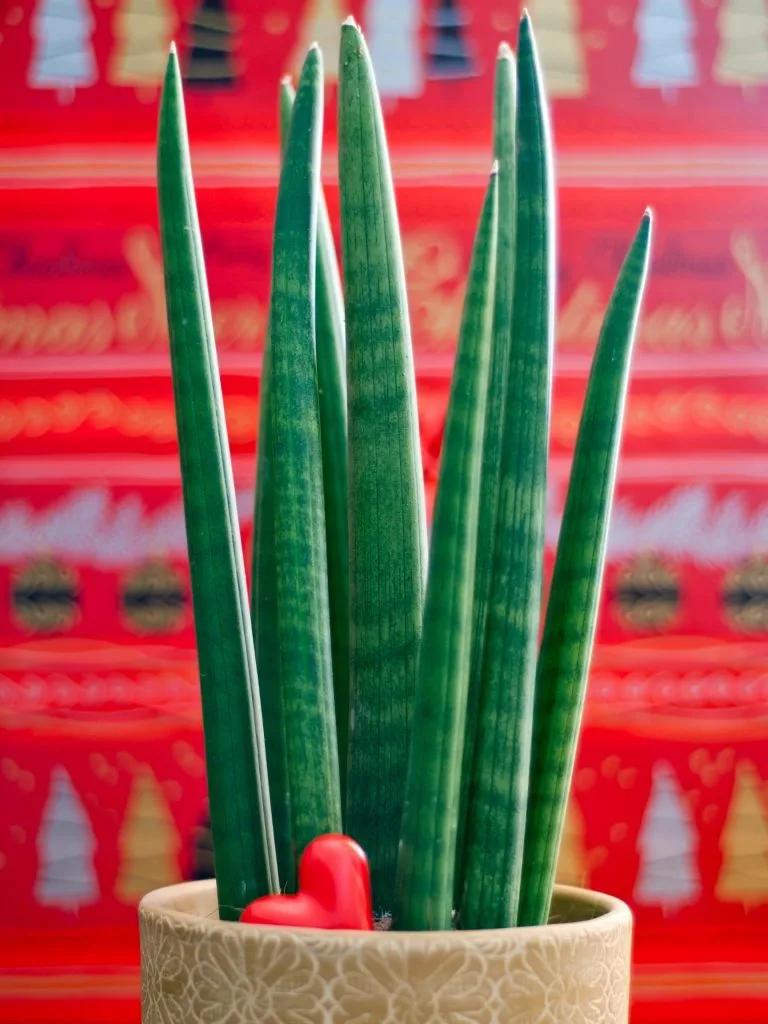
Where To Place a Snake Plant?
The snake plant can be placed almost anywhere in the home. Dracaena trifasciata is well known as an extremely tolerant easy care plant. This versatile, no fuss plant will grow happily in almost all light conditions.
Snake Plants are especially good as bedroom plants. Studies have shown that Mother in Law’s tongue actually gives off oxygen at night which helps improve sleeping.
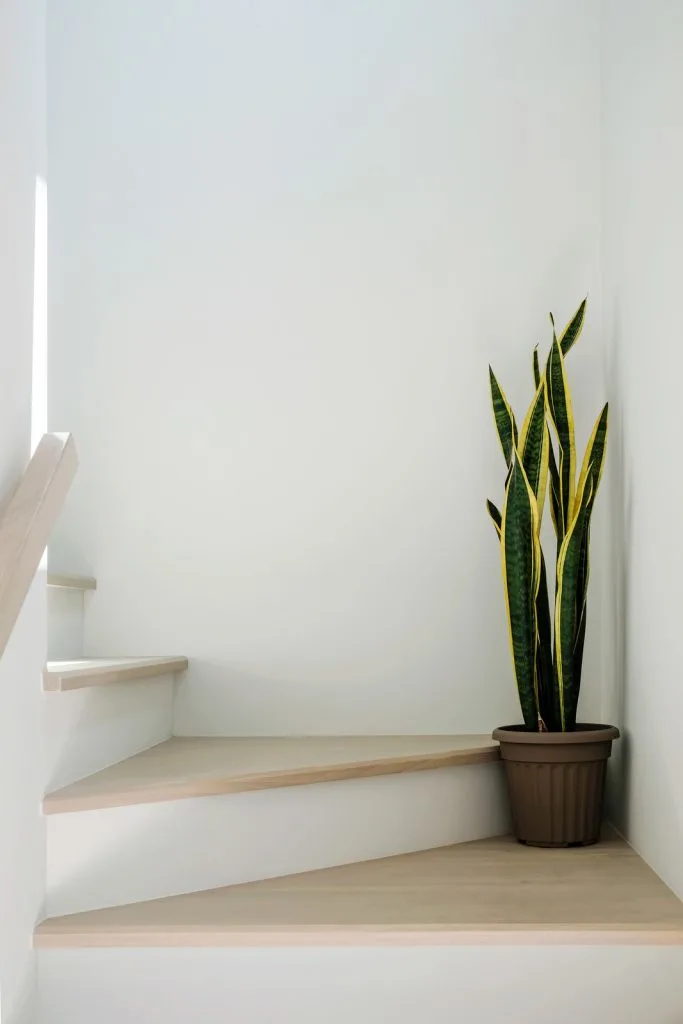
Air Purifying Plant:
Snake plants are one of the best air purifying plants according to the famous NASA study. That’s why they are called the bedroom plant. These air purifiers will help you sleep better. They take in carbon dioxide and produce oxygen at night (the black gold snake plant is especially good at this).
Plants are very beneficial to people emotionally and as an environmental addition to your home.
Read more about why houseplants are beneficial to people here .
The Contented Plant
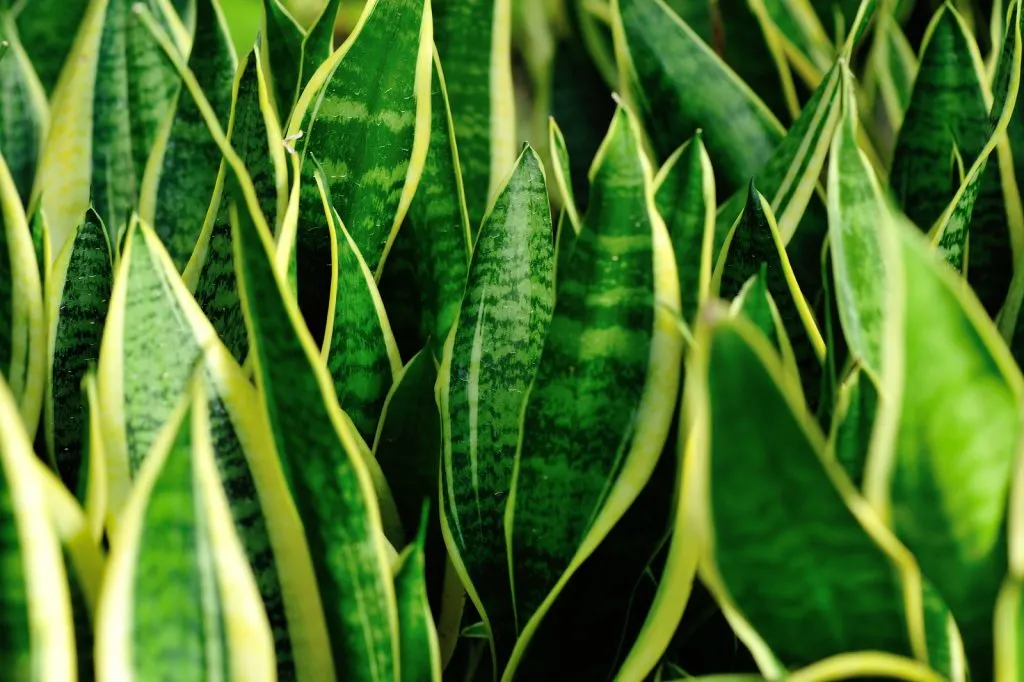
Dracaena trifasciata Quick Care guide:
Watch the video to see Kayti discuss four ways to propagate and care for these plants. You’ll see how easy it is to do and how much fun working with snake plants is.
| Familiar Names | Mother in law’s tongue, snake plant, St Georges Sword, vipers bowstring hemp, |
| Scientific Name | Dracaena trifasciata |
| Plant Family | Aspargus family |
| Care Difficulty | easy |
| Temperature | 55 to 85 degrees F. |
| Watering | water sparingly |
| Soil | light well draining soil. Cactus soils work well. |
| Lighting | These plants grow in all light conditions. Moderate to bright light for faster growth. |
| Growth | vipers bowstring grows upright and does not trail. Table, shelf or floor presentation best. |
These are popular house plants for beginners. We include Draceana in our list of best plants for beginner plant parents. You can’t go wrong with a trifasciata. These are wonderful a gift for someone who wants to get started with houseplants.
Printable Snake Plant Care Guide:
Snake Plant Care Guide
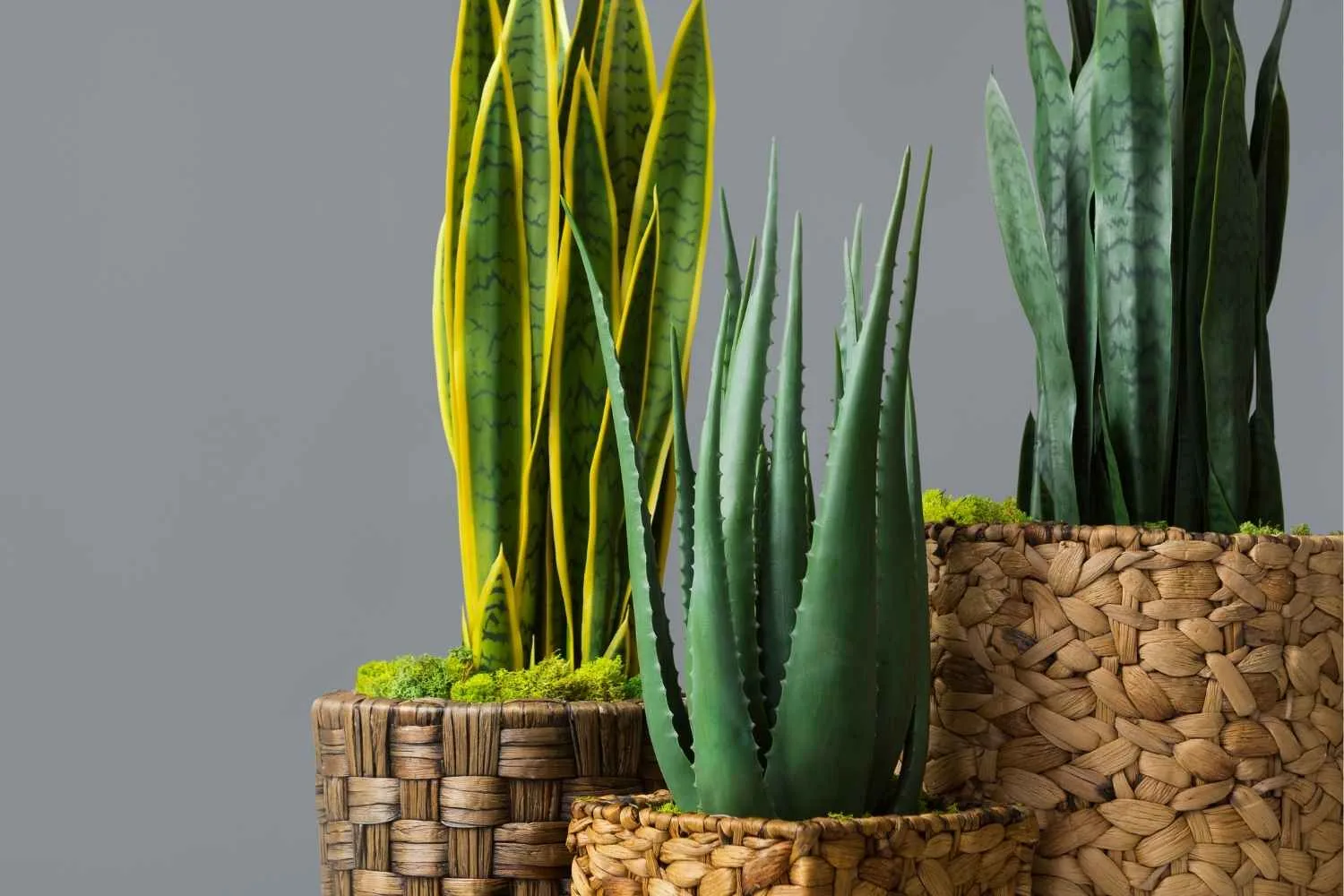
Sansevieria snake plant is commonly known as the Mother-In-Law's tongue or St. George's Sword. Recently it is reclassified as Dracaena Trifasciata.
This plant has thick leaves that vary in size color and shape depending on variety. The snake plant is an easy to care for plant that can survive in lower light levels and with infrequent watering.
This Care Guide will teach you how to keep this houseplant happy all through the year.
Materials
Tools
- Pot (ceramic, plastic, or terra cotta)
- Potting medium (perlite, soil, and orchid bark)
- Scissors
- Rubbing Alcohol
Instructions
Dracaena Trifasciata Soil Preference:
- Sansevieria plants prefer well draining soil. The roots will rot quickly if they sit in moist soil.
- A mix of potting soil, perlite and orchid bark or a commercial cactus and succelent soil mix will keep the roots happiest.
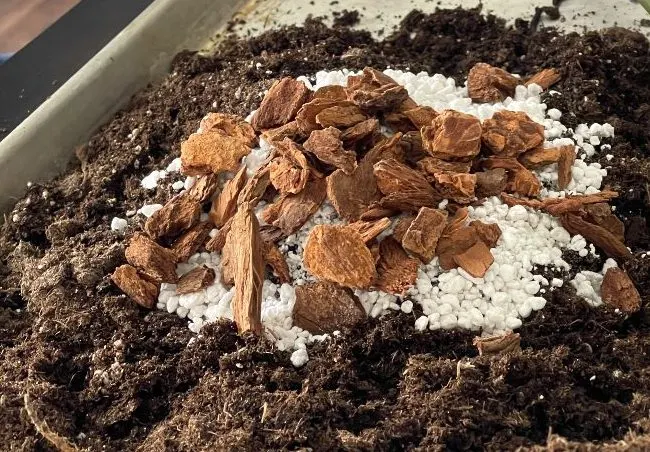
- Make sure your pot has drainage at the bottom. Do not use a pot with no drainage hole for this plant.
- A heavy soil potting mix is not recommended for snake plants.
- READ our post on Best Snake Plant Soil for even more details on how to make a good soil mix for trifasciata.
Pot Size and Type:
- The Sansevieria plant can grow in many different kinds of pots, I like to plant mine in ceramic pots with a drainage hole.
- Repot every second year or when roots come out the drainage holes on the pot bottom To the next pot size up. Don't jump to a huge pot from a small one. Just go to the next size up pot.
Lighting for Snake plant:
Most light conditions will be acceptable to dracaena trifasciata. All varieties grow in any light available. Which is rare for an indoor plant.
If you have your snake plant growing in a heavily shaded area it will grow slower. Bright light will encourage faster growth. Easy!
Do you have a dark corner that needs a little perking up? Dracaena trifasciata growth is affected by light since plants use sunlight to photosynthesize. Expect your snake plant to grow very slowly in dark places. but it should survive just fine with low natural lighting.
For best snake plant growth and color put it in a medium to bright light spot. Snake plants can grow in direct light windows but the leaves may burn if the sun is intense for long periods of time. A window shear will help diffuse strong direct sunlight and keep light levels more evenly distributed through the day.
Important Tips For Snake Plant Lighting:
- The snake plant will grow faster in bright indirect light. It will also grow just fine in lower light conditions, but the growth will be slower.
- Some filtered sunlight from a window may be appreciated in this circumstance.
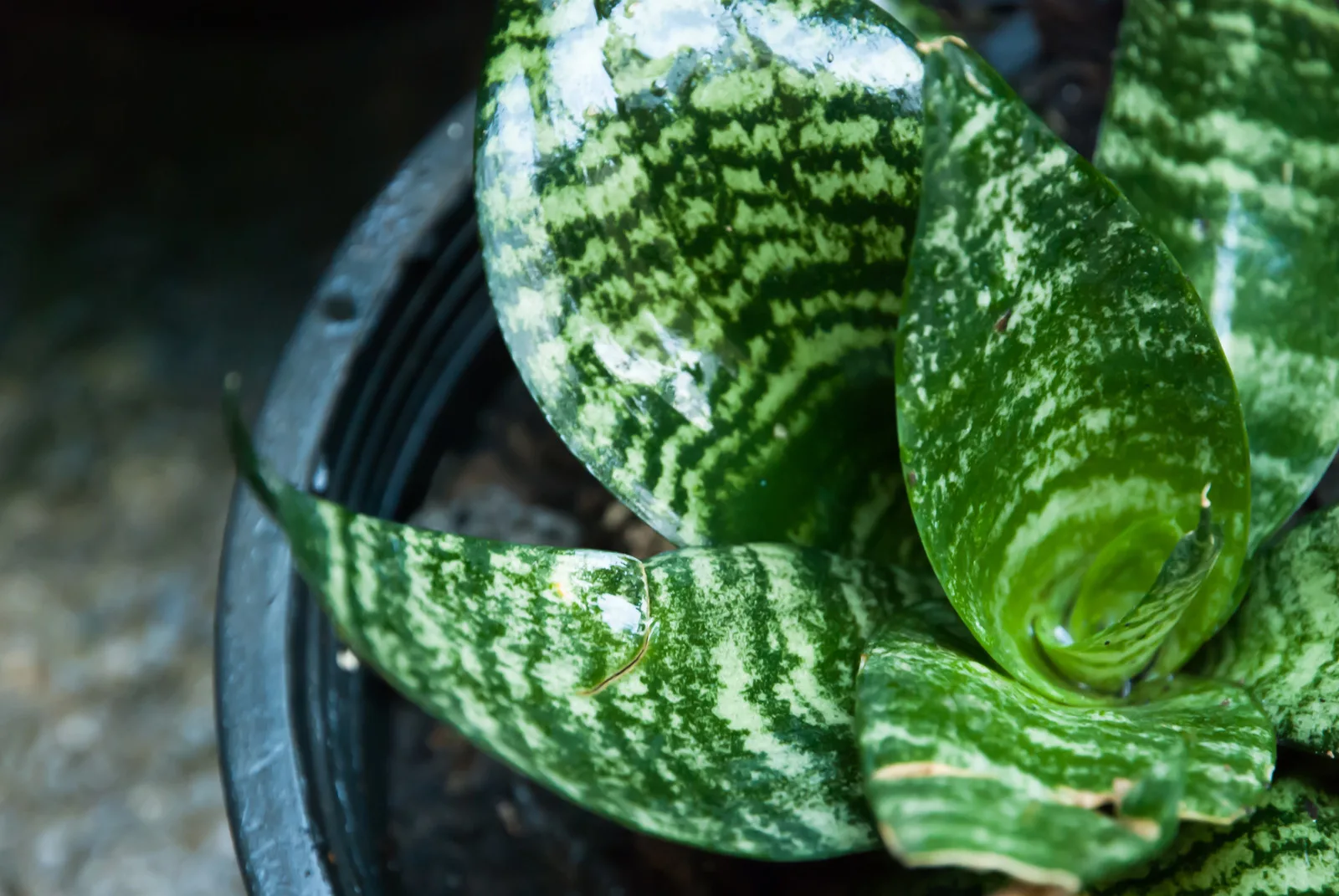
- Make sure the snake plant isnt sitting in constant direct sunlight, the leaves can get burnt.
- If you have a variegated variety, the plant will need more light to hang onto the variegation. Otherwise it can convert back to green,
How to Water Dracaena Trifasciata :
Dracaena trifasciatas are succulents. They need to have good drainage, light soil and watering should be done sparingly.
Over watering will kill a Dracaena Trifasciata more often than anything else you can do to it. Plant your Trifasciata in a proper soil mix (learn more about that in this post). And respect the ability of this plant to sip water through its roots and store that water in the thick rhizomes and leaves purposed for this.
As the plant soil dries out, your snake plant will draw on it's reserves quite a while before the leaves lose firmness and wrinkle with dehydration.
WATERING TIPS:
- Water your snake plant when the soil is dry down to the roots. These plants are typically drought resistant and can withstand longer periods of dryness compared to other houseplants.
- Watering is best done on a regular schedule so the plant is not over or under watered. Both can cause stress on the plant.
- The recommendation for watering is every 2-8 weeks.
- In dormant winter months reduce watering to when the soil is dry.
- Never let this plant get wet feet. Overwatering can cause root rot, molds, viruses and attract fungus gnats to your plant.
How to Fertilize:
The snake plant will tolerate poor soil and little to no fertilizer for quite a while. But eventually the leaves will grow smaller and with less vibrancy. you may also see other symptoms of poor fertilizing over time. For a healthy leaf growth and plant do fertilize as directed here. Please do not over fertilize. Snake plants will get brown spots on their leaves due to an over concentration of salts from too much fertilizer. If this happens flush the pot with fresh water.
- Apply a good quality fertilizer (linked in materials) monthly through Spring and summer.
- Decrease feedings by late Fall and allow the Snake plant to rest through the winter months.
Snake Plant Temperature Range:
The snake plant will do best in temperature between 55-85 degrees F. Outdoors. However, some varieties will survive colder temperature to almost freezing. But they are not hardy perennials and must be well protected from hard freezes.
Pests that bother snake plants:
- The snake plant is a hardy resilient plant. However all plants can get attacked by pests.
- Stress by longterm overwatering, poor light, extreme temperatures and soil conditions are contributors to plant stress..
- Spider mites, mealy bugs, scale, thrips and whitefly are the most common houseplant pests you will see. Read our post on the seven common houseplant pests and how to kill them.
- Read our post on How to get rid of aphids and other pests with our homemade pesticide soap recipe or neems oil.
- To minimize the possibility of pests be sure to check all nursery plants before bringing them home.
- Quarantine all new plants until you are sure no pests live in them.
How to Propagate Snake Plants:
There are four different ways to propagate these plants. Leaf cuttings, plant division, water propagation and rhizome division.
Snake plants are simple to divide at repotting. The mother plant often grows pup off the side. (Read the entire post on snake plant propagation here).
Snake plants have succulent leaves that store water a long time. For this reason, they can be propagated by cutting a leaf and just inserting it into moist soils or water.
The leaf will generate roots in time. No leaf node necessary.
Here's the method for propagation by leaf cutting.
Cut leaf near the bottom using sterile scissors
Cut leaf into 3 inch sections
Place in water cut side down or place in soil
After several weeks roots will grow
Plant in soil when roots are 2-3 inches long
Notes
The Sansevieria Snake Plant is a rewarding and perfect plant for a beginner. This plant will grow tall and beautiful with just a little bit of care.
Are Snake Plants Poisonous?
Snake Plants are somewhat toxic to cats and dogs. All varieties of Dracaena trifascialis contain saponins which are minimally toxic to humans.
Signs of poisoning to pets and people include diarrhea, vomiting and skin rashes or dermatitis.
Are Snake Plants safe to touch? Snake plants are normally safe to touch. However, if you are handling them as cuttings or touching a plant wound, sap may leak out and cause skin irritation. Gloves and hand washing are recommended when working with open cuttings.
Keep these plants out of reach of pets and children. If signs of poisoning are apparent, call the vet or local poison control center immediately.
More Easy Houseplants:
We love easy care plants. Cast Iron Plants, the monstera adansonii, and so many other excellent easy care plants are highlighted on this blog. We have a few more of our favorites below. So many choices…



Follow Us:
Find us on YouTube, Instagram , Pinterest and TikTok! We love to Plant chat. We also comment, like and occasionally share your content to our daily stories. We’d love to see your plants. Share your joy in your houseplants. Happy Planting!
Recent Posts:

Resources:

Yucca Cane Plant Profile and Care Guide - The Contented Plant
Monday 14th of November 2022
[…] prefers bright indirect light. It will tolerate moderate or even low light, similar to a snake plant, but the plant may have a spindly look and grow weaker, thinner canes and […]
Choosing the Best Succulent Pots - The Contented Plant
Sunday 6th of November 2022
[…] tail palm uses its large ‘foot’ at the base of the stem as a water reservoir. ZZ plants and Snake plants have large rhizomes in their root systems that work with thick water storing leaves to preserve and […]
Rhaphidophora Tetrasperma Care Guide - The Contented Plant
Sunday 1st of May 2022
[…] Snake Plant […]
Best plants for beginner plant parents - The Contented Plant
Tuesday 26th of April 2022
[…] Snake Plant Care Guide-Sansevieria […]
The Best Snake Plant Soil Mix - The Contented Plant
Wednesday 9th of February 2022
[…] Snake Plant Care Snake plant moonshine Sansevieria Cylindrca […]